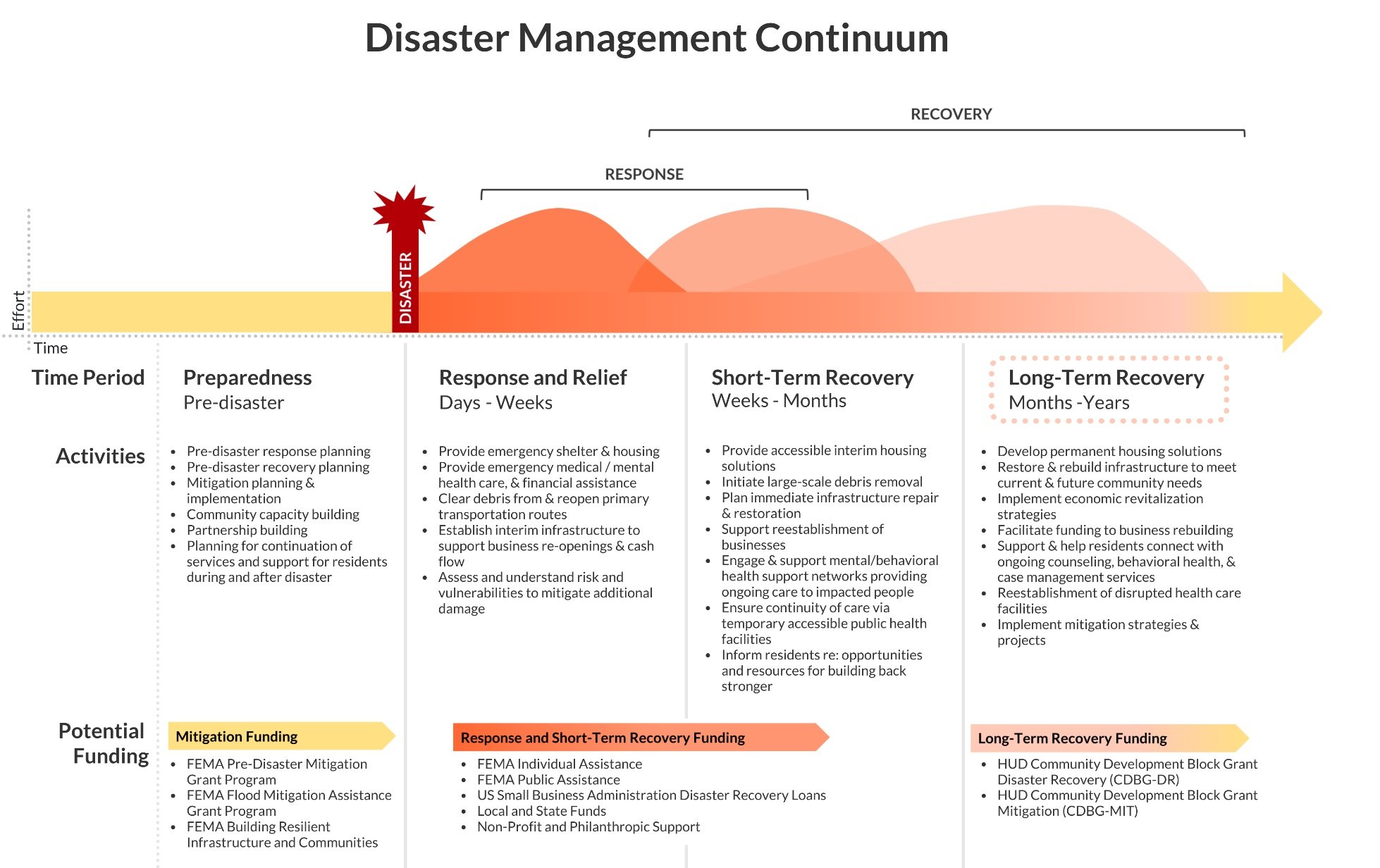
What is Long-Term Disaster Recovery?
The scope of the project was focused on long-term recovery, but the LTDR Plan also aimed to build continuity between emergency response, short-term recovery, and long-term recovery activities. As shown in the graphic below, response and recovery may begin at different points on the disaster timeline, but these processes overlap and require planning and collaboration among governmental and community-based organizations and leaders.
Disaster preparedness refers to proactive, pre-disaster measures that mitigate the potential impact of a disaster event. It is a continuous cycle of planning, organizing, training, exercising, evaluating, and taking corrective action before a disaster occurs. Preparedness activities include creating emergency plans, distributing emergency kits, conducting drills and trainings, establishing channels of communication among government, organizations, and residents.
Disaster Preparedness
Short-term recovery activities focus on stabilizing a post-disaster situation, ensuring the safety of survivors, and paving the way for long-term restoration and reconstruction. Activities undertaken during this phase are often characterized by temporary actions taken during response and relief that then bridge to permanent, long-term recovery. The concept described here is consistent with short- and -intermediate-term recovery per the NDRF and HNL-CEMP.
Short-Term Disaster Recovery
Disaster response and relief refers to the organized efforts and actions taken to address the immediate needs of individuals and communities affected, save lives, and protect property. Relief can mean any physical or financial assistance provided. The concepts described here are consistent with response and short-term recovery per the Federal Emergency Management Agency’s (FEMA) National Disaster Recovery Framework (NDRF) and City and County of Honolulu Comprehensive Emergency Management Plan (HNL-CEMP).
Disaster response and relief efforts typically include:
Search and rescue operations,Emergency medical care,Shelter and short-term housing provision,Food and water distribution,Debris removal,Emergency repairsAssessing impacts, andRestoration of essential services and infrastructure.
Disaster Response and Relief
Long-Term Disaster Recovery activities begin during and after initial response and include intermediate and long-term activities focused on restoring the built, economic, social, cultural and natural environment in ways that prevent or mitigate (reduce) impacts from future disasters. The concept described here is consistent with long-term recovery per the NDRF and HNL-CEMP.
Long-term recovery begins months or years after a major disaster is declared and ramps up as response, relief, and short-term funding and activities taper off. Long-term recovery activities may include:
Rebuilding and redeveloping permanent housing and public infrastructure;
Long-term financial assistance for households, businesses, and local governments;
Economic and workforce development programs;
Restoring natural and cultural resources;
Redesign of local codes and ordinances to mitigate damage from future events; and
Community development initiatives.

